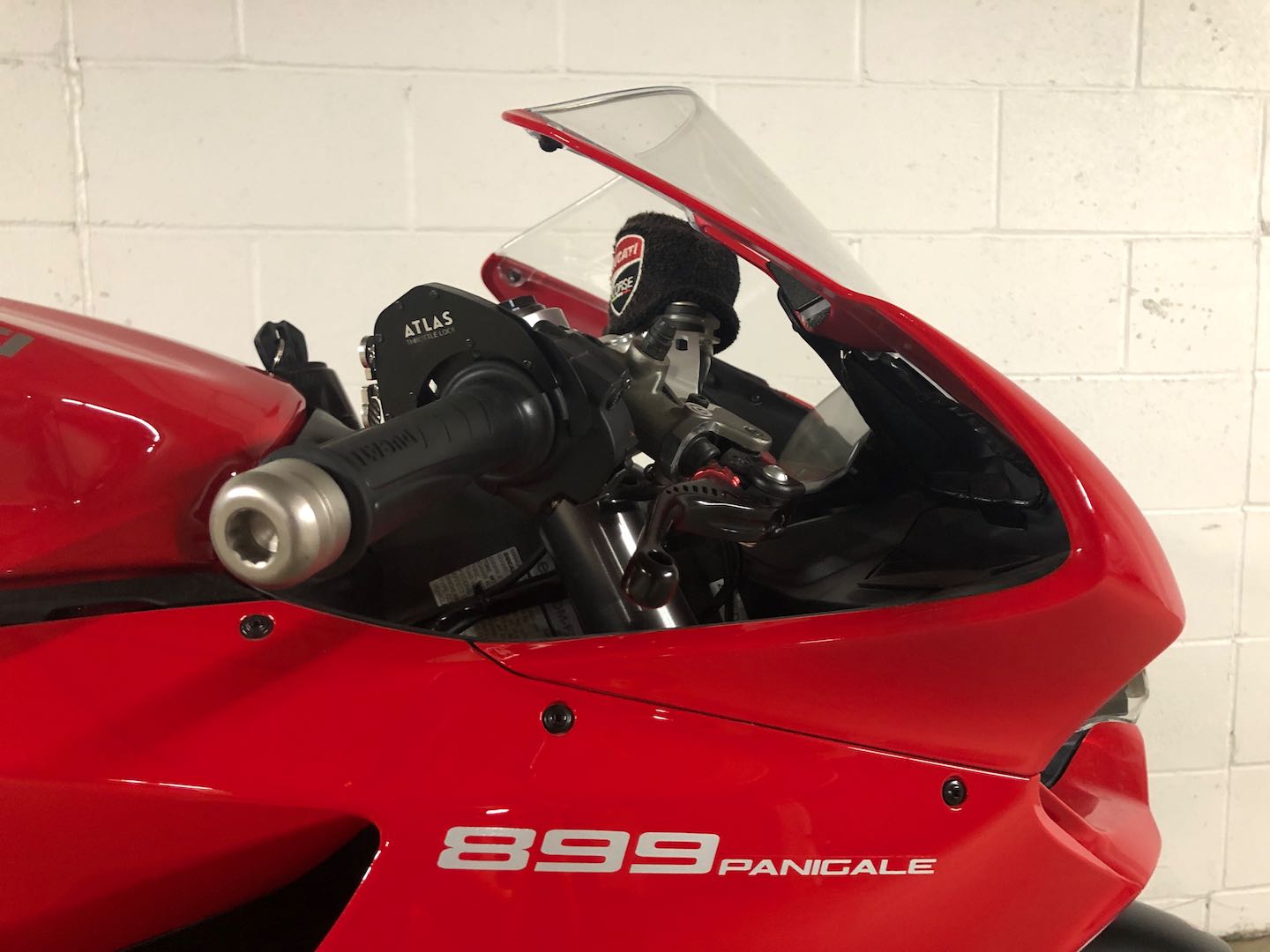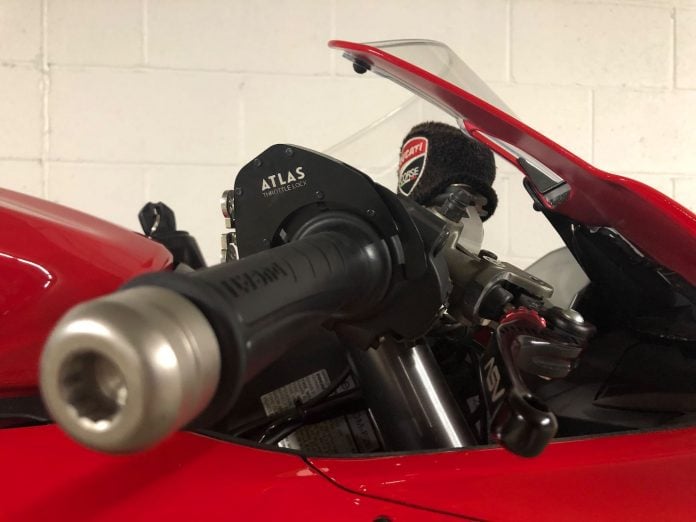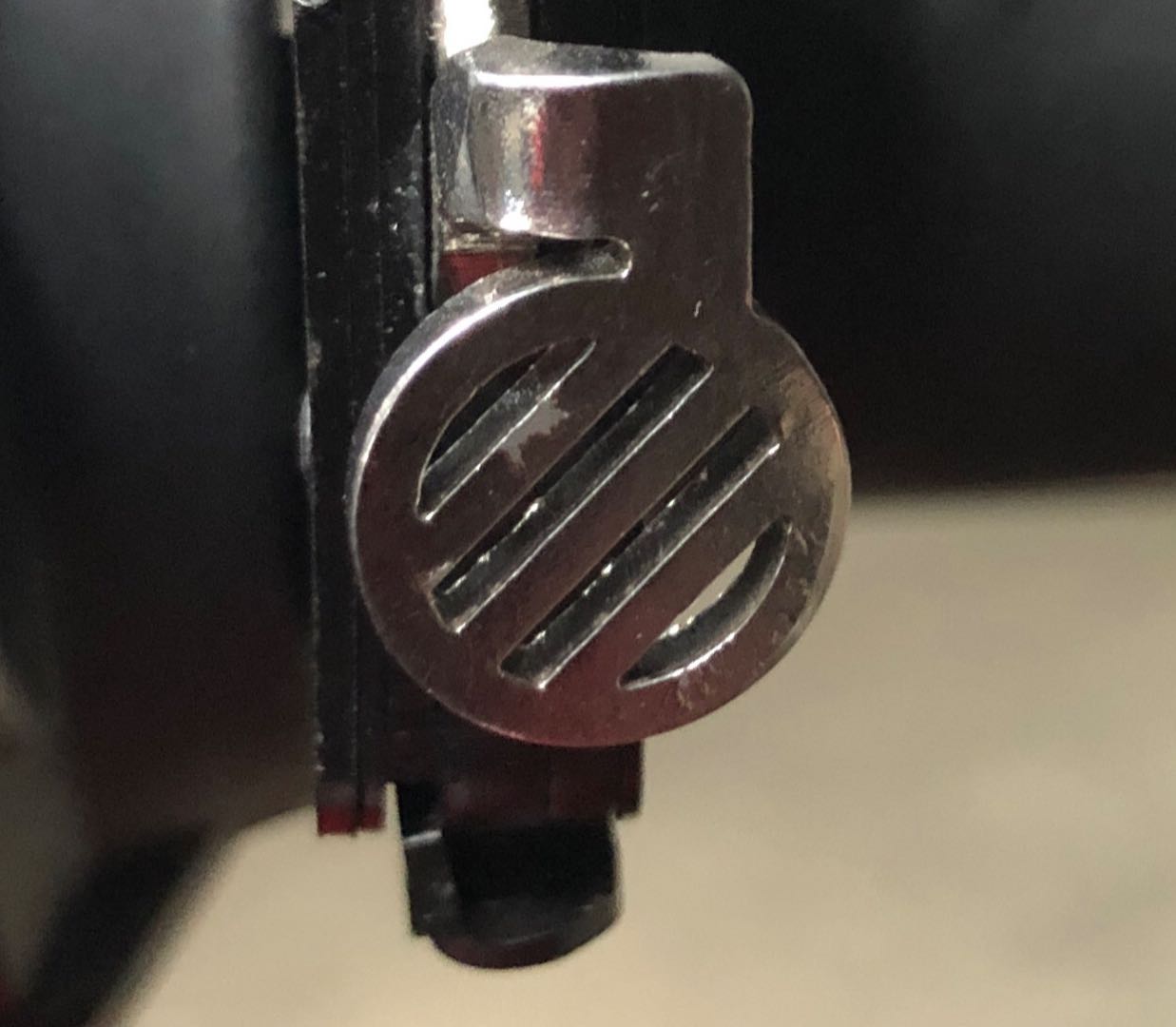Mechanical cruise control that delivers a twist of comfort to any bike.
Chewing up miles of the interstate on anything less endowed than a Honda Gold Wing can feel like arm wrestling Dwayne “The Rock” Johnson.
It’s even more exhausting when one of your two-wheeled compatriots lazily passes you on said Gold Wing with his hands poised mockingly behind his head, and his feet splayed out on luxurious forward controls (ask me how I know.)

Now, there isn’t much you can do to transform a Ducati Panigale 899 into a 148 horsepower armchair, but luckily you don’t need one of those unicorn bikes that are both comfortable and fun to ride (ahem… BMW R 1250 GS) to find a little respite in the saddle. All it takes is one minor change to just about any machine.
Enter the Atlas throttle lock, a simple device that uses pressure and friction to hold the throttle at the desired position when engaged, preventing it from twisting shut until the mechanism is disengaged. This allows the rider to maintain a consistent speed while relaxing their right arm for a few miles on a tense ride.
Throttle locks aren’t new; there are many designs out there. The Atlas is different because it mounts to the throttle sleeve between the grip and throttle body, allowing the device to rotate with the grip for easy, quick, one-handed actuation at all times. This is safer and more convenient than others, which can hog grip space or require two hands and more than a fraction of drama to operate.
When I first got my hands on the unit that Atlas provided for this review, I was impressed by its nearly perfect fit and finish. American-made hardened stainless-steel components are laser-cut and assembled with tight tolerances that exude a premium build quality. It feels like something that will last the life of my motorcycle and beyond.
The exception to its svelte design is the buttons, which felt loose within the frame and bore two small blemishes in their tumble-polished finish. Atlas explained this as “splatter from the laser that wasn’t polished out,” and assured me the minor defect is more common for demo kits. Plus, I didn’t notice either of these niggles while riding with the Atlas anyway.
The Atlas installs on the bar without fuss or fanfare. You don’t have to mod or remove anything from your bike for installation, and there is only one Allen bolt to tighten (a wrench is supplied, but use your own). I fitted it within five minutes besides tinkering with button orientation and choosing the right friction pad, which might take a couple of tries. Atlas expects this, and smartly includes an extra set in three sizes plus an additional fastener in case you strip the first (seriously, use your own wrench).
After the lock was fitted, I immediately noticed how handsome the Atlas looked on the bar. Its slender 1/4-inch profile complemented the sleek lines of my Panigale, and its matte black finish is a few shades darker than my switchgear and grip rubber. (A raw polished finish is available as well if that’s your thing.) Overall, I loved how well it camouflaged with factory componentry.
Back in the garage, I discovered that the Atlas wasn’t building up enough pressure to keep the throttle pinned. This is where the extra spacers come in handy. Since I’d used all mine, I contacted Atlas, and they gladly shipped me another set. I sanded the thinnest pad to rough up the surface for enhanced friction, applied it over the existing one, and hit the road again.
Voilà. With user error corrected, the throttle lock maintained my speed perfectly—well, as best as it can be expected to. This is not an electronic cruise control, and therefore has some limitations that should be addressed.
Like all mechanical throttle locks, the Atlas can’t account for elevation or wind speed and adjust fueling accordingly. It simply fixes your throttle in place, so your speed will undulate with the road. However, the rider can always override the Atlas without disengaging it, by simply twisting the throttle, allowing for real-time adjustments on the fly.
If you’re willing to spend some time to dial in the fitment, you’ll have mechanical cruise control that can be fitted to any steed in your stable and look darn good doing it.
The price is $135. For more info, visit Atlas Throttle Lock Website.























![2024 MV Agusta Enduro Veloce Review [18 Fast Facts]](https://ultimatemotorcycling.com/wp-content/uploads/2024/04/2024-mv-agusta-enduro-veloco-review-fast-facts-28-218x150.webp)

